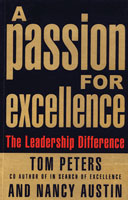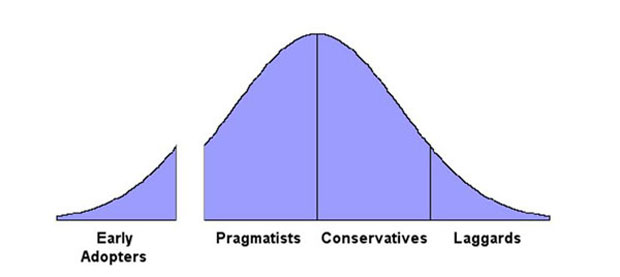Does better customer knowledge deliver better profits? And what role does internal communications play with your customer?
12 February 2013 By Northern Lights

I was recently asked to give a webinar for Worldmark’s management development programme on understanding the customer.
As always, there is nothing like teaching others to remind yourself of all the things we should be doing in our own businesses. Here were the points we focused on.
1. Translate customer understanding to profit
First of all, the group looked at why a better understanding of customers translates into profit
- Your products and services are what your customers want to buy
- You can charge premium prices
- Your marketing is more effective and targeted, so you spend less money on wasted marketing
- Sales are quicker to convert
- You get more repeat business
- There are fewer complaints
And of course all that converts to more profit!
2. Segment your customers
Segmenting your customers seems both obvious and easy to do. But categorising your customers by their types and then the products and services they want, can be quite difficult.
When we created our new website we went through this process ourselves – and the challenge was to get our customers into just six categories and then put all the things that we can do to help clients into just six headline services.
If you actually look at the list of all our clients we could have segmented them into at least a dozen categories. But there is a danger of seeming to be all things to all people. And not then really explaining how you understand those groups of clients and what you can do for them – in their language.
Since we got everything more focused, we have had really good enquiries (and business) from our website – because we have the right words and case studies for searches such as ‘PR for universities’ and ‘internal communications’.
3. Research increases customer understanding
 We looked at a variety of ways to research and map your customers
We looked at a variety of ways to research and map your customers
- Data analysis of existing customers – patterns of buying, mapping by type
- Focus groups
- Feedback from meetings
- Trend analysis
- Customer surveys
As Professor Jon Reast covers in his blog on relationship marketing, once you really understand your customer then you can sell more to them.
There is one danger in market research, as Sara Hughes, a buyer and product innovator said: “A buyer’s skill is to spot new trends and to present products and ranges in a way that makes you want to buy. I reckon market research would have turned down most of the best-sellers I’ve bought over the years. People do buy impulsively when the look, touch, feel is all just right.”
4. Factual vs emotional categorisation
When looking at existing customers, it can be useful to group them into categories such as: geographical location; age; gender; job title; type of company. But the key is to think how you will use the data and what extra insights this mapping will give you.
Some years ago, the White Company looked at where its online customers were located – and on that basis decided they would open a number of stores around the country. They knew they already had a loyal following in those locations.
You have probably used the phrase ‘early adopter’ dozens of times. But how often have you formally segmented your customers using the classic marketing bell curve? With technology inter-weaving everything we do these days, this has probably never been more relevant.
The four groups are
- Early Adopters – risk takers who like to be the first to get anything new
- Pragmatists – may use new technology, if it’s the only way to solve their problem
- Conservatives – dislike new technology and will avoid using it
- Laggards – are proud to be the last to try anything new
5. Employees are your best customer researchers
 This part of the webinar proved the most thought-provoking. Understanding the customer is not just down to the marketing or sales teams – everyone in the business should be noticing things about your customers
This part of the webinar proved the most thought-provoking. Understanding the customer is not just down to the marketing or sales teams – everyone in the business should be noticing things about your customers
- Receptionist – getting increasing calls from Spain
- Delivery driver – customers not happy about the state of packing of deliveries
- Sales teams – clients are cutting back on spend per order
- Scientists – a number of new tests being requested on products
The trick here is how you encourage employees to notice and think about customers – and then how you gather and make sense of that information. Investors in People gives a very good structure for internal communications to do this.
 When preparing this webinar, I remembered what has influenced me the most over the years in understanding the customer – Tom Peters’ book Passion for Excellence
When preparing this webinar, I remembered what has influenced me the most over the years in understanding the customer – Tom Peters’ book Passion for Excellence. I dug out my (very old) copy and looked at all the jottings in the column. Despite its age, it all still makes a lot of sense and is still worth the read.
Where have you had the best return for your efforts in understanding the customer – and where the least return?


